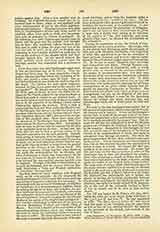

Lennig, ADAM FRANZ, theologian, b. December 3, 1803, at Mainz; d. there, November 22, 1866. He studied at Bouchsal under the private tutorship of the ex-Jesuit Laurentius Doller, and afterwards at the bishop’s gymnasium at Mainz. Being too young for ordination, he went to Paris to study Oriental languages under Sylvestre de Sacy, then to Rome for a higher course in theology. Here he was ordained priest, September 22, 1827, and then taught for a year at Mainz. Lennig was a strenuous defender of the rights of the Church, and when on January 30, 1830, the Hessian Government, which for quite a time had been trying to interfere in church matters, passed thirty-nine articles on ecclesiastical administration, he sent them to Rome. Rome sent back a protest, but, since the bishops remained silent, and since Bishop Burg of Mainz even defended the articles, Lennig left for Bonn, and attended the lectures of Sailer, Windischmann, and Klee. In June, 1832, he accepted the pastorate of Gaulsheim, declining to take the chair of theology and exegesis at Mainz. In 1839 he was made pastor at Seligenstadt. Bishop Kaiser of Mainz in 1845 promoted him to the cathedral chapter. In March, 1848, he established the “Piusverein“, which did much good among the Catholics of Germany. He organized the first meeting of Catholic societies and of Catholics in general held at Mainz, October, 1848. In the same month he was present at the meeting of the German bishops at Wurzburg, acting as representative of his bishop, who was ill. About this time he founded at great expense the “Mainzer Journal”. After the death of Bishop Kaiser (December 30, 1848), troubles arose about the choice of a successor. Lennig was acknowledged by all as a leader of true Christian spirit and suffered much abuse from the Liberals. In 1852 he was made vicar-general by Bishop von Ketteler, and in 1856 dean of the chapter. He zealously assisted his bishop in bringing the Capuchins and Jesuits into the diocese. In 1854 he was in Rome at the definition of the Immaculate Conception, and later visited Rome twice. In 1859 he wrote a protest against the spoliation of the Holy See, and had it signed by 20,000 Catholics. He was undoubtedly one of the most influential and zealous German priests of his day. Lennig published in 1849 his “Panegyric on Bishop Kaiser”, and in 1862 his “Funeral Oration on the Archduchess Mathilde of Hesse“. His meditations on the Passion and on the Our Father and Hail Mary were published 1867 and 1869 by his nephew, Chr. Moufang.
FRANCIS MERSHMAN

